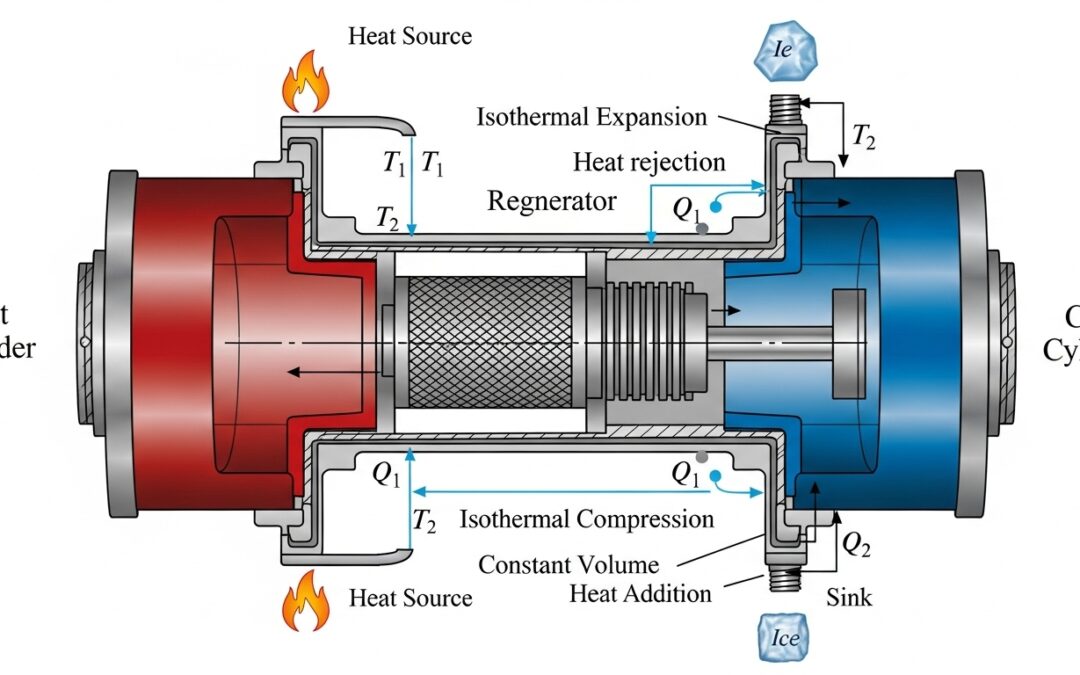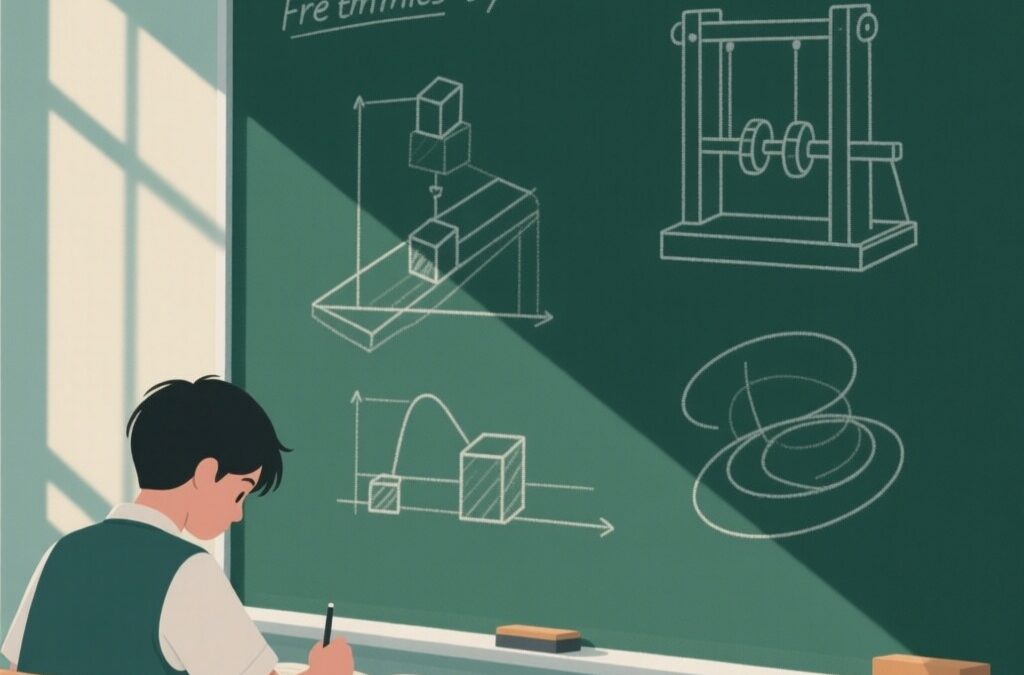Motion in One Dimension forms the foundational block in understanding the Physics of movement. This topic delves into the specifics of how objects move in a straight line under the influence of various forces. By exploring the key concepts of displacement, velocity, and acceleration, one can grasp how these parameters interrelate to describe the kinematic motion of particles or bodies in a single-dimensional plane.
Understanding Motion in One Dimension
Motion in One Dimension, also known as Rectilinear Motion, focuses on the movement of objects along a straight path. This type of motion simplifies the analysis of movement as it restricts the scenario to a single axis, usually the x-axis. To comprehend this, we examine three primary components: displacement, velocity, and acceleration.
Displacement
Displacement refers to the change in position of an object. It is a vector quantity, meaning it has both magnitude and direction. If an object moves from position \(x_1\) to \(x_2\), the displacement \( \Delta x \) is given by:
\[
\Delta x = x_2 – x_1
\]
This provides a clear understanding of how far and in which direction the object has travelled.
Velocity
Velocity signifies the rate of change of displacement with respect to time. It also is a vector quantity. The average velocity \(v_{\text{avg}}\) can be calculated by:
\[
v_{\text{avg}} = \frac{\Delta x}{\Delta t}
\]
where \( \Delta x \) is displacement and \( \Delta t \) is the time interval. Instantaneous velocity refers to the velocity at a specific point in time, derived as the limit of the average velocity as the time interval approaches zero:
\[
v = \lim_{\Delta t \to 0} \frac{\Delta x}{\Delta t} = \frac{dx}{dt}
\]
Acceleration
Acceleration denotes the rate of change of velocity with time. This vector quantity provides insights into how quickly an object speeds up or slows down along its path. The average acceleration \(a_{\text{avg}}\) is expressed as:
\[
a_{\text{avg}} = \frac{\Delta v}{\Delta t}
\]
Similarly, instantaneous acceleration is the derivative of velocity with respect to time:
\[
a = \frac{dv}{dt}
\]
“The definition of acceleration is found in the analysis of the change in the velocity vector, providing a powerful tool for predicting future motion attributes of objects.”
We also Published
- Metal compound A reacts with dilute hydrochloric acid to produce effervescence. The gas evolved extinguishes a burning candle. Write a balanced chemical equation for the reaction if one of the compounds formed is calcium chloride. Also, determine the Metal Compound A.
Based on the information provided, the metal compound A reacts with dilute hydrochloric acid to produce effervescence, and the gas evolved extinguishes a burning candle. Additionally, one of the compounds formed in the reaction is calcium chloride. Let’s write the balanced chemical equation for this reaction: Metal Compound A + Hydrochloric Acid → Calcium Chloride […] - What is a Chemical Reaction?
A process in which one or more substances get transformed to produce new substance or substances is called a Chemical Reaction. A chemical reaction involves changes in the position of electrons of atoms by restructuring chemical bonds, with no changes to the nuclei of atoms, thus preserving the elements of participating substances. The occurrence of […] - Chandrayaan-3: India\’s Lunar Exploration Mission to Discover the Moon\’s Composition
In 2008, India embarked on its first lunar exploration mission, Chandrayaan-1, marking a significant milestone in its space endeavors. Following the success of Chandrayaan-1 and the failure of Chandrayaan-2, India announced its plans for Chandrayaan-3, the country’s third lunar exploration mission. Chandrayaan-3 is designed with multiple objectives in mind. Primarily, it aims to achieve a […]
Equations of Motion
Key equations of motion are pivotal for solving problems regarding motion in one dimension. These equations interlink displacement, velocity, acceleration, and time, anchoring our understanding to predictable mathematical relationships. They are:
First Equation of Motion
The first equation relates velocity and acceleration:
\[
v = u + at
\]
where \( u \) is the initial velocity, \( v \) is the final velocity, \( a \) is acceleration, and \( t \) is time.
Second Equation of Motion
The second equation expresses displacement in terms of velocity and time:
\[
s = ut + \frac{1}{2}at^2
\]
Here, \( s \) represents displacement.
Third Equation of Motion
The third equation connects initial velocity, final velocity, acceleration, and displacement:
\[
v^2 = u^2 + 2as
\]
“These kinematic equations provide vital methodologies to determine unknown variables in one-dimensional motion.”
Practical Examples in Motion
To solidify understanding, practical examples help illustrate the theoretical concepts. Let’s consider an object under constant acceleration.
Example 1: Dropping an Object
Calculate the final velocity of an object dropped from rest after 5 seconds. Given that the acceleration due to gravity \( g \) is \( 9.8 m/s^2 \):
\[
v = u + at = 0 + (9.8)(5) = 49 m/s
\]
Example 2: Car Braking
A car travelling at 20 m/s comes to a stop in 4 seconds. Calculate the acceleration. Utilizing the first equation of motion:
\[
v = u + at \implies 0 = 20 + (a)(4) \implies a = -5 m/s^2
\]
Example 3: Distance Covered by a Moving Object
A vehicle accelerates from rest with an acceleration of \( 3 m/s^2 \) for 8 seconds. Calculate the distance covered:
\[
s = ut + \frac{1}{2}at^2 = 0\cdot8 + \frac{1}{2}\cdot3\cdot8^2 = 96 \text{ meters}
\]
# Python code for calculating distance
initial_velocity = 0
acceleration = 3
time = 8
distance = (initial_velocity * time) + (0.5 * acceleration * time**2)
print(distance)
96
Graphs of Motion
Graphs provide a compelling way to analyze one-dimensional motion. By plotting displacement-time, velocity-time, and acceleration-time graphs, one can visualize the trends and derive information about the object’s motion.
Displacement-Time Graph
A straight line on this graph indicates constant velocity. A curved line implies changing velocity, denoting acceleration or deceleration.
Velocity-Time Graph
A horizontal line represents constant velocity. The slope of this line gives acceleration. A line with a positive slope indicates acceleration, while a negative slope indicates deceleration.
Acceleration-Time Graph
This graph shows how acceleration changes over time.
Applications in Real Life
Understanding motion in one dimension has practical applications in multiple fields including transportation, sports, engineering, and safety mechanisms.
Transportation: Calculation of stopping distances, design of road safety features, and optimization of vehicle performance rely heavily on these principles.
Sports: Athletic performance analysis leverages these concepts to enhance training methodologies and improve results.
Engineering: Mechanical designs, structure integrity assessments, and dynamics computations depend on accurate predictions of motion.
Safety Mechanisms: Safety mechanisms in vehicles and machinery, like airbags and automated emergency braking, utilize concepts from one-dimensional motion to function effectively.
“Mastery of these fundamental principles opens avenues for innovation and safety implementations in various sectors.”
RESOURCES
- 3: Describing Motion in One Dimension – Physics LibreTexts
- Motion in One Dimension: Definition & Formula | StudySmarter
- Kinematics In One Dimension – Physics – YouTube
- 6A: One-Dimensional Motion (Motion Along a Line): Definitions and Mathematics – Physics LibreTexts
- Description of Motion
- Welcome to CK-12 Foundation | CK-12 Foundation
- Motion in One Dimension: Definition & Formula | Vaia
- Chapter 2, Motion in One Dimension – YouTube
- Projectile Motion – University Physics Volume 1





0 Comments